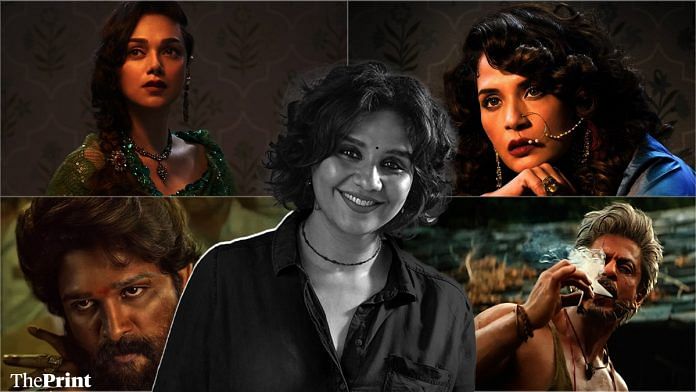Mumbai: Shah Rukh Khan himself ushered make-up artist Preetisheel Singh into Mannat. At that moment, Singh 26, knew she had arrived. She created his looks for his most recent hits, Pathaan and Jawan. But less than a decade ago, Singh was just another SRK fan who had posed outside the actor’s house in Mumbai with the teeming throng of fans for a photo.
Today, Singh is one of India’s most sought-after makeup and prosthetic artists and character designers. Alia Bhatt, Ranveer Singh, Amitabh Bachchan, Allu Arjun, Fahadh Faasil, Sonakshi Sinha, Thalapathy Vijay, Nawazuddin Siddiqui–actors from across film industries, not just Bollywood, have been transformed into various iconic characters under the deft hands of Preetisheel Singh.
Everyone has her on speed dial. She has won the National Award for Best Makeup Artist twice–for her first feature film Nanak Shah Fakir (2014), followed by Gangubai Kathiawadi in 2022. In the intervening years, the woman from Pathankot established India’s first SFX (Special Effects Makeup) lab and school of character design in Mumbai with her business partner and now husband, Mark D’Souza.
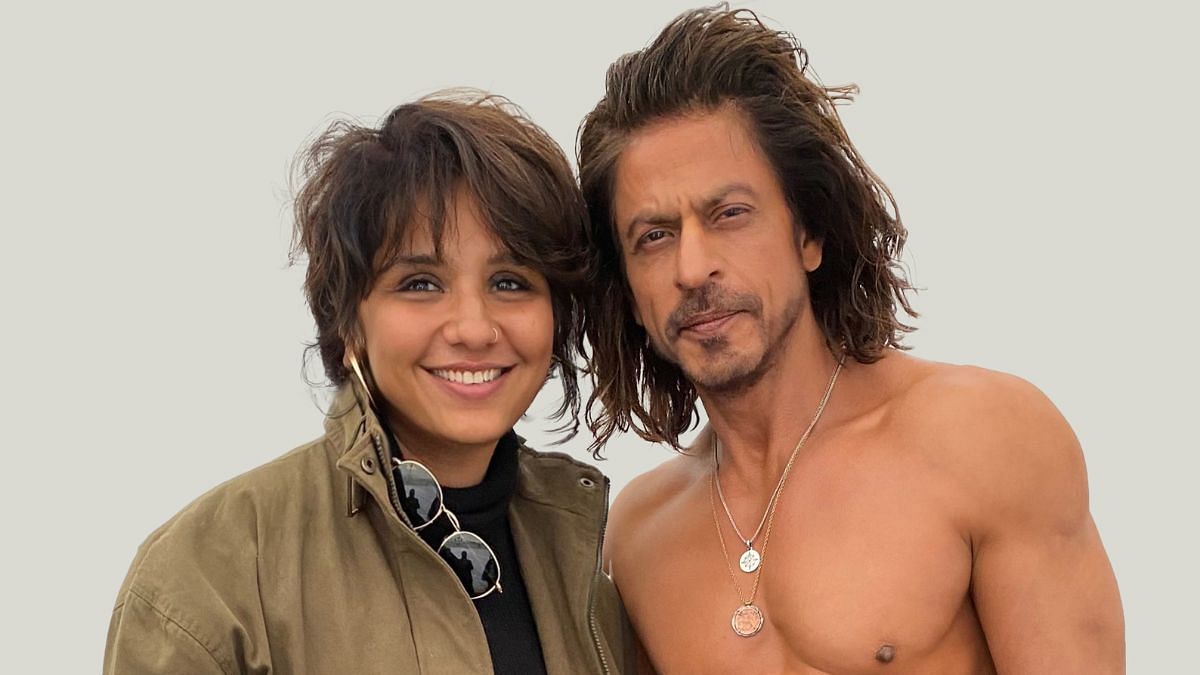
“What Preeti and her team did for me in Bala (2019), I couldn’t even imagine. They have always worked around my features and always tried enhancing them, keeping the character in mind,” actor Bhumi Pednekar tells ThePrint, referring to the highly controversial look where her skin was darkened for the role.
But Singh never misses a beat. She’s the brain behind Ranveer Singh’s fierce look as Alauddin Khilji in Padmaavat (2018) and the menacing Pushpa Raj (played by Allu Arjun) in Pushpa: The Rise (2021). SRK’s bald head look in Jawan, and the creature in the latest Malayalam horror-thriller, Bramayugam (2024), have come out of her workspace in suburban Mumbai. Spread across five floors, it has dedicated labs, a teaching wing, and Da MakeUp Lab where the magic unfolds.
Now, Singh is once again the talk of the town with the release of Sanjay Leela Bhansali’s lavish Netflix period drama series Heeramandi: The Diamond Bazaar. Alamzeb’s (Sharmin Segal) ethereal shayar; the controlling Mallikajaan (Manisha Koirala); saree-clad Fareedan’s poise with a cigarette in her hand; and Bibbojan being (Aditi Rao Hydari) battered in a British jail for her involvement with rebels–they’ve all been conceptualised by Singh through character designing.
“With Khilji in Padmaavat, my attempt was to create a look that showed his evil side. People should feel fear and disgust,”Preetisheel Singh.
Stories are important to Singh.
“I’m keeping the 1940s and 1950s in mind but also defining each of the courtesans differently so that everyone does not end up looking the same. And each courtesan has her own backstory, which needs to come through her look,” says Singh.
She sees her work as another layer to a movie, a facet that elevates the viewing experience.
“With Khilji in Padmaavat, my attempt was to create a look that showed his evil side. People should feel fear and disgust. With the creature at Bramayugam, it was showing the eerie, creepy, otherworldly factor—that makes your skin crawl,” says Singh.
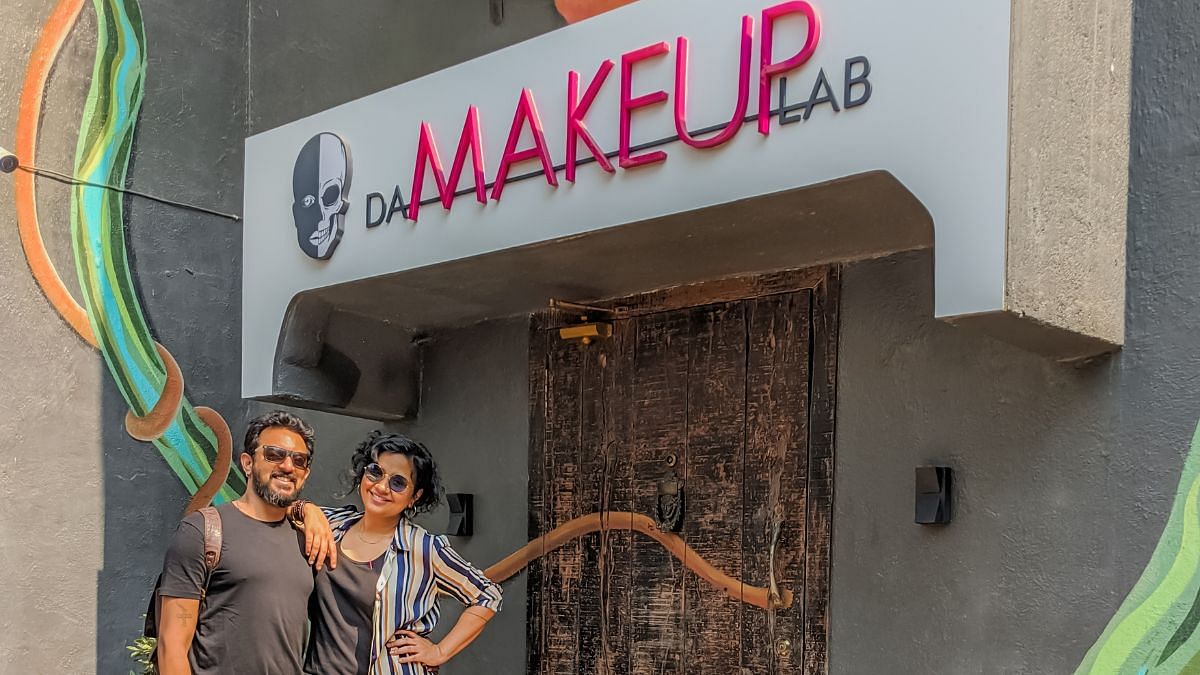
Also read: Punjab is undergoing an indie film revolution. Challenging the Jatt Sikh domination in cinema
God is in the details
At first glance, Singh’s office looks no different from any corporate space with its massive glass-topped table. But the table has eyeballs, prosthetic arms and legs, and figurines of Amitabh Bachchan as Ashwatthamaa in Kalki and Shah Rukh Khan as Azad of Jawan. Sketches she’s done of her son, husband and parents hang on the walls. On the floor, there are boxes filled with SFX make-up, more prosthetic limbs and a giant prototype of a superhero suit.
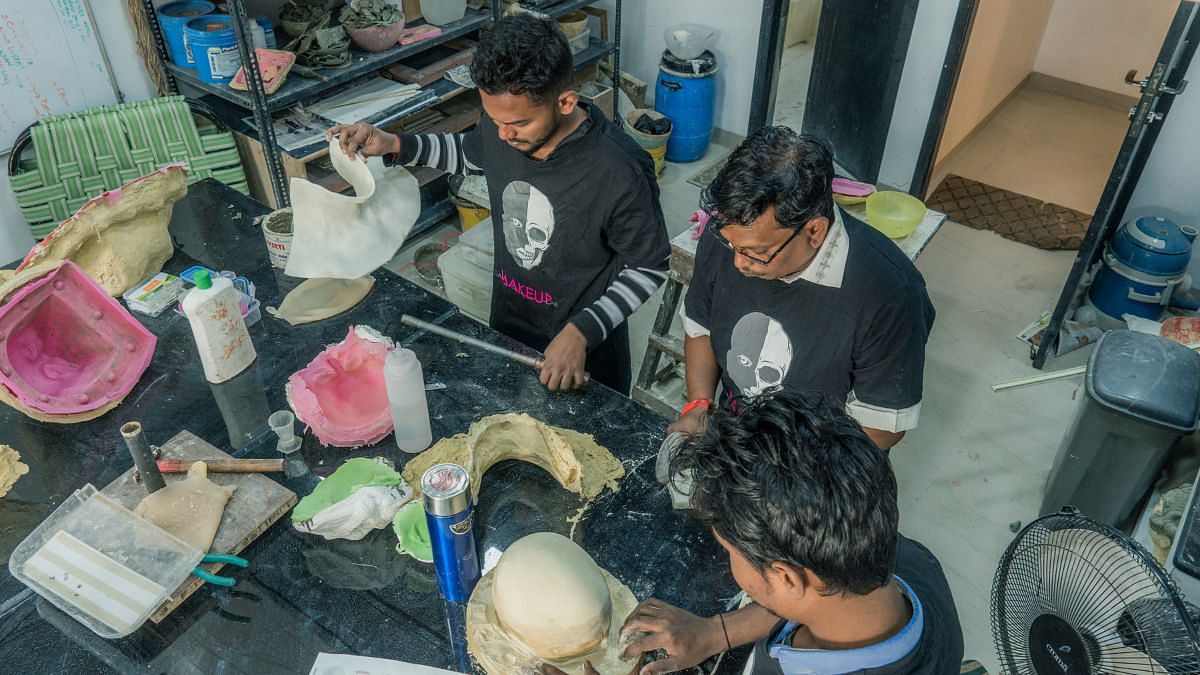
Singh loves to play around with the looks–the scar and ponytails for Khilji, a skull cap and bandage for Azad. Each and every element, from eyebrows to every single pore on the actor’s skin is meticulously conceptualised and designed. God is in the details.
“Brown-skinned Asians do not age like Caucasian people. So I need to ensure that the ageing is done keeping everything in mind—from region, gender to even financial background, or it will look fake,” she says.
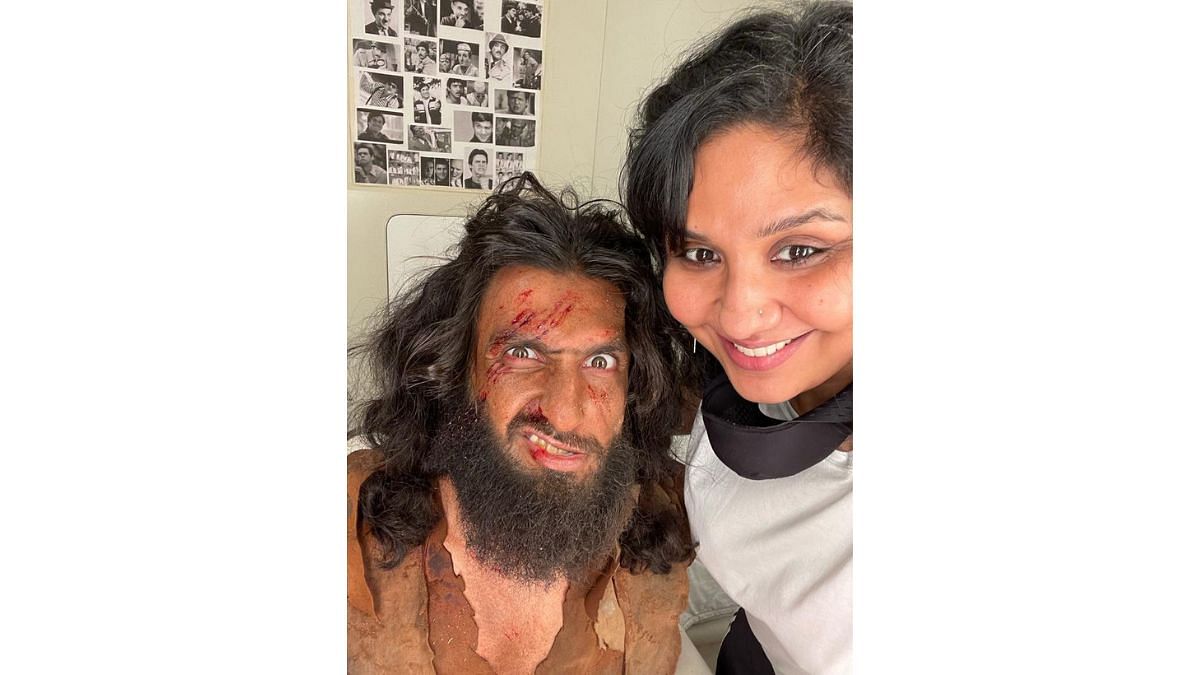
And it begins with the script. It’s the key to her research.
“Khilji was an invader who travelled across the country and was on the battlefield all the time. The weather deeply impacted his skin and face. We tried to reflect this in Ranveer’s make-up,” she says. Singh is still getting DMs from people in Pakistan and the Gulf countries on how she created the look.
She’s constantly pushing against the film industry’s penchant for stereotypes. While fleshing out the character of the transwoman Raziabai in Gangubai Kathiawadi played by Vijay Raaz, she envisioned him with a short smart bob.
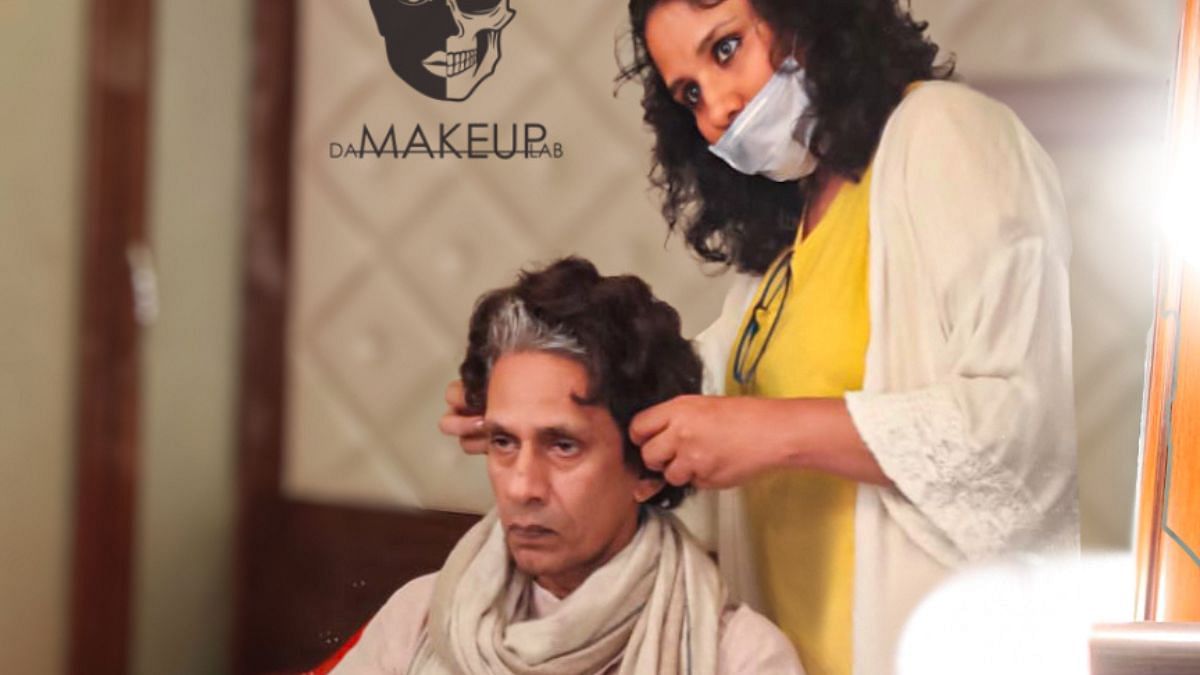
“It can get really frustrating when, in meetings, producers slash budgets from the already limited amount that is given to the hair and makeup department,” says Singh.
Singh started Da MakeUp Lab, a special effects makeup studio, with her husband back in 2014 in a small one-room space. “We’ve just shifted to this space that has five floors,” says Singh. She has also founded the Preetisheel School of Character Design to educate young talent in the field of prosthetics and SFX makeup.
But for all the accolades, applause, and awards, it’s still a fight to get directors and producers to invest in their characters. The majority are only now warming up to the idea of bigger budgets for better outcomes.
“It can get really frustrating when, in meetings, producers slash budgets from the already limited amount that is given to the hair and makeup department,” says Singh. Most films also do not have budgets for SFX or prosthetic makeup for the entire cast. That’s where Da MakeUp Lab steps in — with elements that are created and rented out to filmmakers.
Werewolves, babies, pregnant bellies, limbs—you name it, Da MakeUp Lab has it all. “When a producer does not have the budget for the whole film, sometimes they just get a few elements, like pregnant bellies for Mimi (2021) and babies for Joram (2023),” says Mark D’Souza, co-founder of the lab.
On a sunny March afternoon, the lab is a hive of activity. A team is working on a body cast for an actor to use in the second season of a popular Netflix show. Three people mix the liquid that will frame the hand of the actor, while Singh helps create the silicon mould for the arm. Even the actor is fascinated by the process and records every minute of it on his phone.
In another part of the office, an animatronics expert works on the heart of a silicone baby. It has to beat in rhythm while the infant prop breathes through its nose. A few others are working on an existing mould of an actor to create elements for it.
It’s like a high-tech robotics lab, except that it’s altering the movie-watching experience. But there are limitations too, especially with the sourcing of materials, including silicon, which, according to Singh and D’Souza, still needs to be exported.
“We get that every few months when one of us is travelling abroad. There is no compromise on quality because that is what helps us create signature looks,” D’Souza adds.
Punching in fake hair on a silicon limb, creating burn scars, or even adding fake eyeballs, everything is done by hand. And actors, production teams, and costume designers have come to trust Singh and her team.
Also read: Surinder Sonia made Chamkila famous but Imtiaz Ali’s film reduces her to a footnote
The big break
Born in a middle-class Punjabi family, movies were Singh’s window to the rest of the world. But unlike most cinema lovers, what caught her attention was the physical changes a character underwent to show the passage of time.
“I have known her for a long time, and she does her work with a lot of honesty. She is truly a magician, and it’s fascinating to watch her work,” says Akshay Kumar.
“Kamal Haasan’s transformation from this young guy to this cute adorable chachi [In Chachi 420, released in 1997] blew me away. I realised this was the power of makeup,” says Singh. She was ready to jump headlong into the film industry, but her parents stepped in. They wanted her to complete her formal education first and try out a traditional, stable job.
She completed her BTech degree and eventually started working with Tata Consultancy Services as a software developer. But the lure of Bollywood only increased despite her climbing the corporate ladder, getting a good package, and a posting in the United States. It was while she was in America that she decided to bet on herself and her dreams. She cleared out her savings to enrol at the Cinema Makeup School in Los Angeles in 2010. After that, she moved to Mumbai in 2011.
“I would go door-to-door with my portfolio, showing people what I was capable of and asking for work,” says Singh. Actors would often laugh at her face when she tried to suggest looks. Her first breakthrough was with Nanak Shah Fakir.
The period drama, based on the life and teachings of Guru Nanak, allowed Singh to showcase her penchant for detailing and innovation, as she re-created the look for the founder of Sikhism. ” I was on a walk in my hometown when I got the call and I really couldn’t process it for a long time. I was just a film old! But it’s a moment etched forever in my memory,” says Singh
Then she got a call from Vishal Bhardwaj’s team for Haider (2014). “My first ever character design was for Irrfan Khan’s character. But Bhardwaj immediately rejected the look,” says Singh. She was staring at what could have been the end of her career. “But then, Irrfan Khan walked in just as the conversation was ending and asked to look at what I had created. He was immediately impressed,” says Singh.
Over the years, she has earned the trust of actors, directors, costume designers, and producers.
“I have known her for a long time, and she does her work with a lot of honesty. She is truly a magician, and it’s fascinating to watch her work,” says Akshay Kumar.
But it’s her partnership with Bhansali that has come to define some of her best looks. She’s been working with him ever since they teamed up for Bajirao Mastani (2015).
She brought to screen the historical characters of Bajirao, Kashibai and Mastani, and created a template for how it should be done.
Kashibai, played by Priyanka Chopra with her Maharashtrian nath and drape and centre parted hair with a bun, and Deepika Padukone as Mastani in her flowing anarkali suits, and nose ring became unforgettable depictions. In fact, the song Pinga Re, where the duo dance together in traditional nauvari drape became a pop culture moment.
What makes Bhansali and Singh a dream team are their respective eye for detailing and perfection, especially in period films with opulent sets, and dramatic looks of characters.
They have teamed up for Gangubai Kathiawadi, Padmaavat and now, Heeramandi.
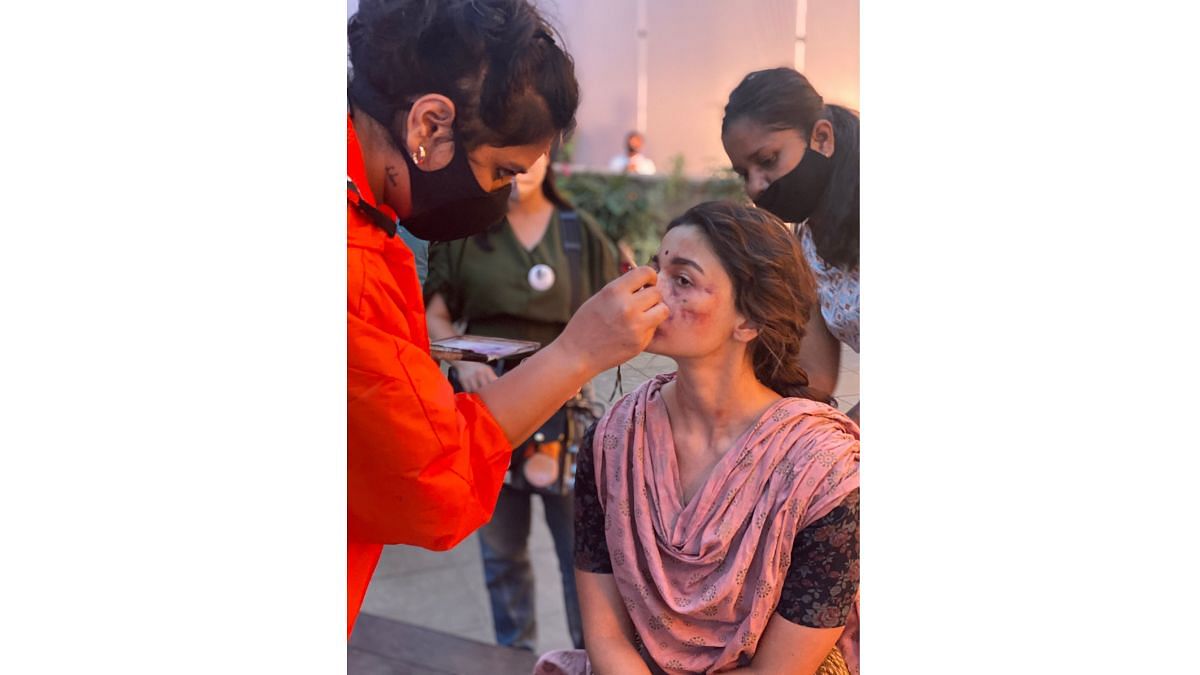
It was a match made in heaven between two perfectionists. It also helped Singh expand her ambit beyond Bollywood.
“When I took my mother to the set of Bajirao Mastani to meet Sanjay, she thanked him for giving me the opportunity to work on the film. And he told her, ‘Your daughter does not need us, we need her’,” she says.
Also read: History, heritage, hustle—Bengali filmmaker Prataya Saha’s 5-min movies on big cities go global
Seeking recognition
It was Bajirao Mastani that got South Indian directors and producers to sit up and take notice of Singh’s work. She got a call from the makers of the 2016 Tamil movie, 24. They were impressed by her character design for Ranveer Singh, Priyanka Chopra, and Deepika Padukone.
“It is no longer about flying in artists from Hollywood to do makeup or prosthetic transformation. I now get called in for most of the ambitious projects,” says Singh.
In 24, Singh worked with actor Suriya, who played a triple role in the film—Sethuram the scientist, his son Mani, and the villain Athreya. Each of his looks was carefully planned. The two worked together again for the National Award-winning film, Soorarai Pottru (2020).
In the film, Suriya’s character Nedumaaran Rajangam is an Air Force pilot who leaves his job to become an entrepreneur. The unravelling of his ordered life is reflected in his metamorphosis from a clean-shaven man with cropped hair to a struggling out-of-work villager with a beard streaked with white and dark circles under his eyes.
Today, Singh’s work can be seen in television commercials and shows on streaming platforms. She has created all the ‘mutants’ for the Amazon Prime Video thriller series The Village (2023) and designed the looks of the gangsters in Bambai Meri Jaan (2023).
“Preeti’s work made me recommend her to the producer of Bramayugam, and she created the creature’s look for the film,” says Milind Rau, director of The Village. What impressed Rau was her ability to create looks while keeping in mind how they will appear on screen, the ability to adapt and find solutions when things don’t go as planned.
The mutants in the village were a nod to the rotting pirates of Pirates of the Caribbean: Dead Man’s Chest (2006), with melted faces, bald heads, and eyes deep in the sockets. Singh had to change the suits of the mutants a few times to get them right—initially, they were not waterproofed for sequences shot with water.
“Preeti is not just talented herself, but she has now trained an extremely talented team that is efficient on the ground, and can deliver whatever is needed, and she can manage from hours away, sitting in any other city,” adds Rau.
Nagarjuna, Thalapathy Vijay, Rana Daggubati, Suriya, Allu Arjun, Ram Charan, Naga Chaitanya to Daggubati Venkatesh — big stars in South Indian film industries, too, have been transformed by Singh. Name any blockbuster, Singh has been a part of it.
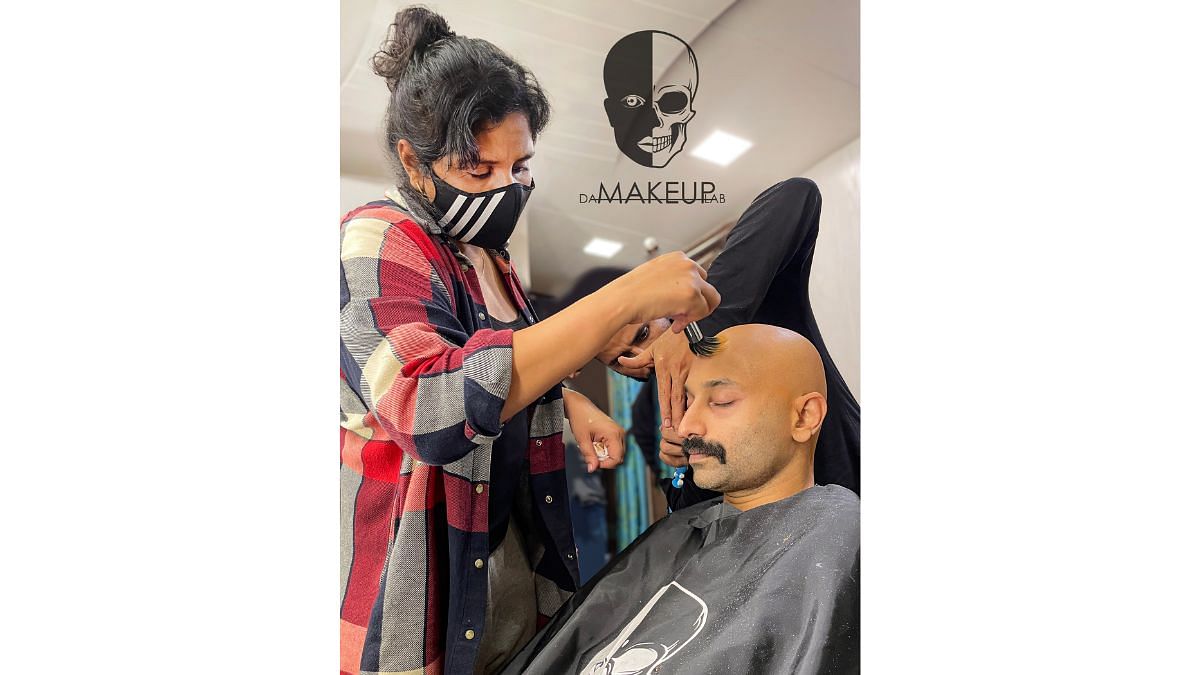
In her upcoming project, Kalki 2898 AD, Singh unveiled the look for Amitabh Bachchan’s character Ashwatthama.
Cloaked in a shawl, with long flowing, Dumbledore-like white hair, dark eyes on a face with deep wounds, Bachchan looks unrecognisable in the futuristic movie slated for release this June. His eyes glisten behind mummy-like bandages, adding to his mysterious appearance. Netizens were thrilled to see a new avatar of Big B. Some said they got goosebumps looking at his look, others were thrilled by his dedication.
When Allu Arjun’s look from the upcoming Pushpa 2 was revealed–with the actor wearing fluorescent makeup, a bindi, and a saree–it broke the internet.
“It is no longer about flying in artists from Hollywood to do makeup or prosthetic transformation. I now get called in for most of the ambitious projects,” says Singh.
It’s a far cry from the time when the make-up departments on film sets would be run by ‘dadas’.
“There wasn’t much respect for the hair and make-up people, especially for the kind of work they do,” says D’Souza. He met Singh on the sets of Nanak Shah Fakir, and the partnership took off both on the personal and professional levels. D’Souza used to own a VFX company and later co-founded Da MakeUp Lab.
Singh is building the world of Indian SFX and prosthetic makeup, but there is no institutional recognition of her talent. Despite new award categories for acting or other segments mushrooming with OTTs, there are no separate categories for makeup artists. Even existing ones have been removed over time.
There is only the National Award where there is a segment for the makeup category. IIFA used to have it, and Singh got it for Haider (2014). But even that is removed. That speaks volumes about the attitude to makeup,” says D’Souza.
Singh is trying to change this one movie at a time.
“Singh’s work also helps us think bigger. Here is an artist who can turn our vision into reality,” says Rau.
(Edited by Ratan Priya)



